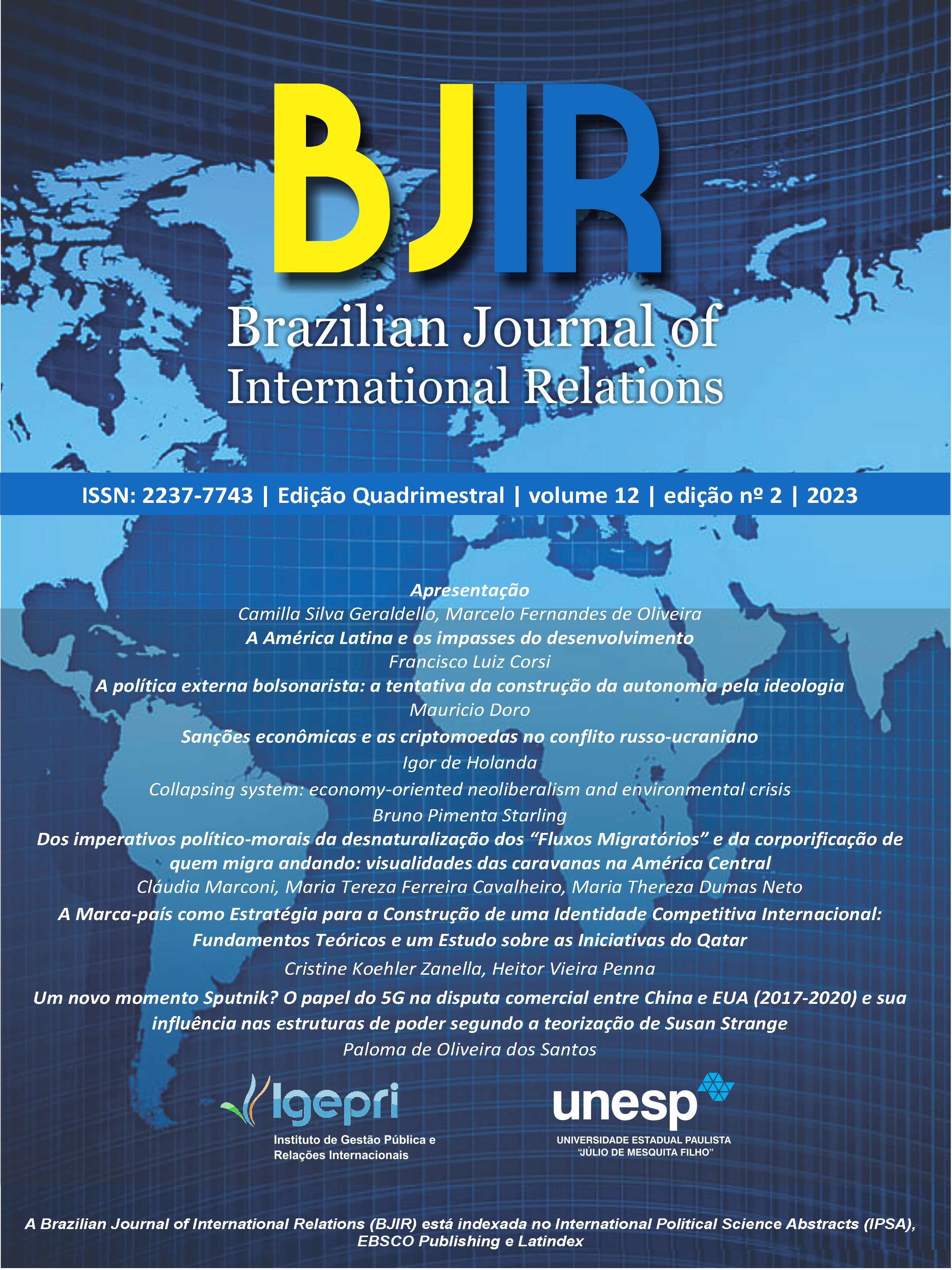On the moral-political imperatives denaturalizing “migrant flows” and the embodiment of the “Walking Migrant”
visualities from central American Caravans
DOI:
https://doi.org/10.36311/2237-7743.2023.v12n2.p261-280Keywords:
“walking migration”; caravans; corporification; visualities; Central AmericaAbstract
The naturalization of the State and its borders and, consequently, of migration, which has been framed as fluid and spontaneous flows, culminates in a notion of inevitability of this political imaginary objectively bordered and in the disembodiment of those who migrate. These two naturalizations forgather in the process in which the creation of infrastructures to maintain the border results, in its turn, in a regime of extreme uneven mobility. It is possible to say that migration flows, understood as such, conceal certain bodies and the ways in which a geoinfrastructure affects different bodies in uneven ways. The present article aims to adopt an embodied conceptualization of migration, focusing on the walking journey of the migrant, with the purpose of understanding how the so called “migration crisis”, perceived as a threat to state sovereignty, stems from precisely the eroticization of this political imaginary and the technologies that are (re)structured to preserve it. By looking into the walking caravans journeying from Central America to the United States, our aim is to give visibility to features of this crossing which are usually invisibilized, and bring forth more plural visualities of the migration practice.







